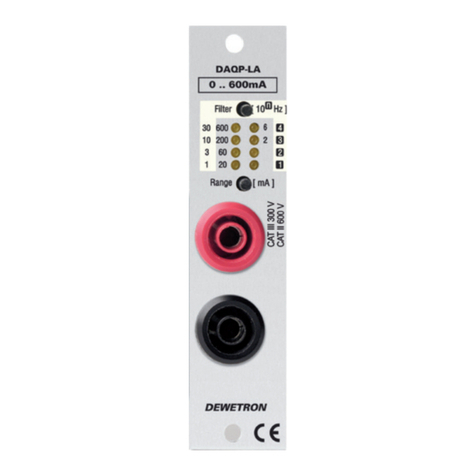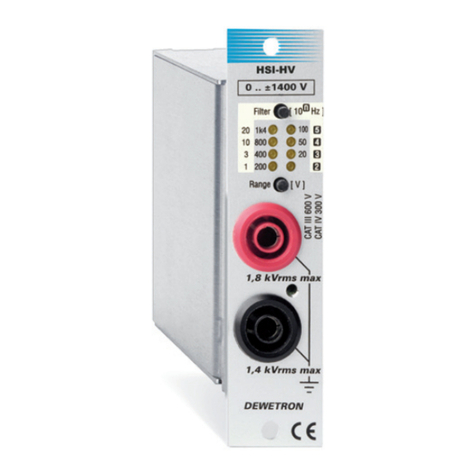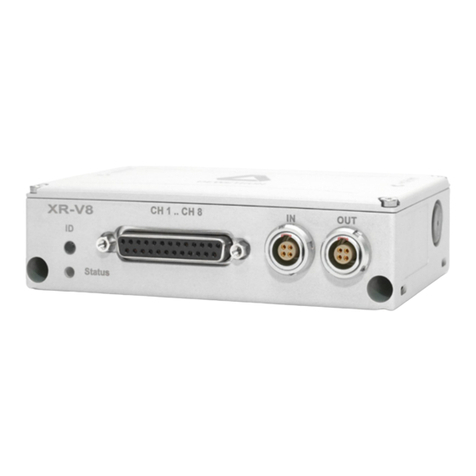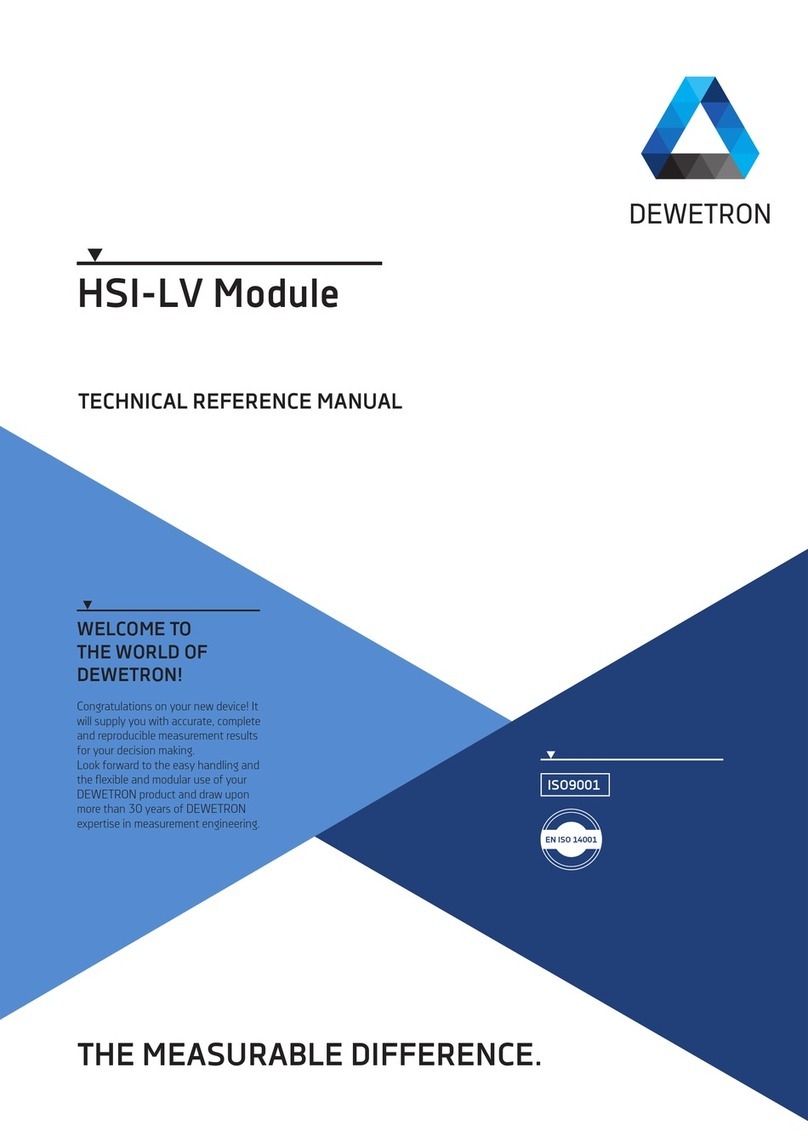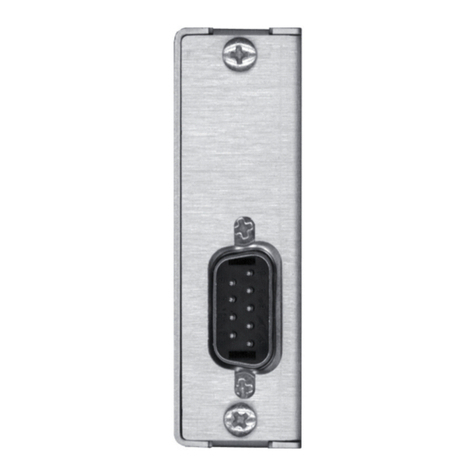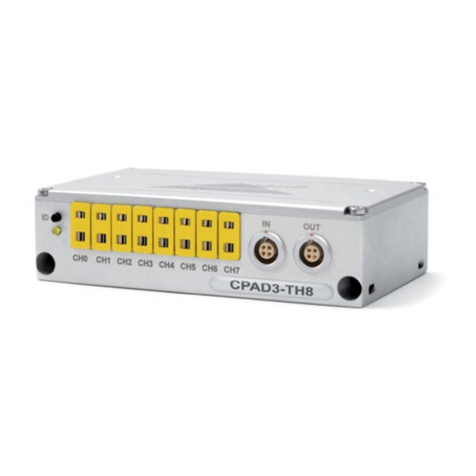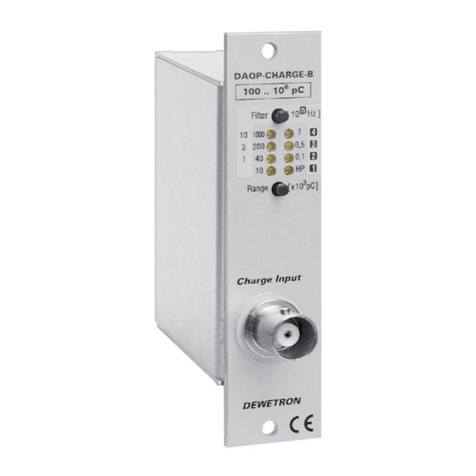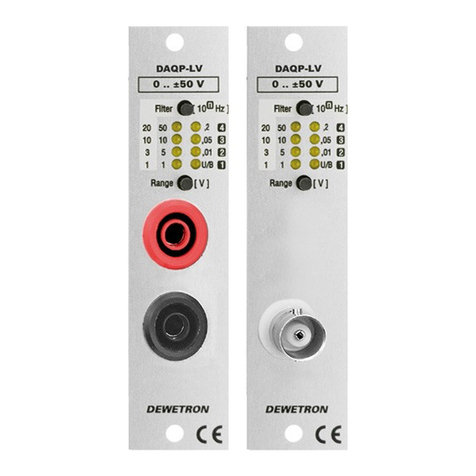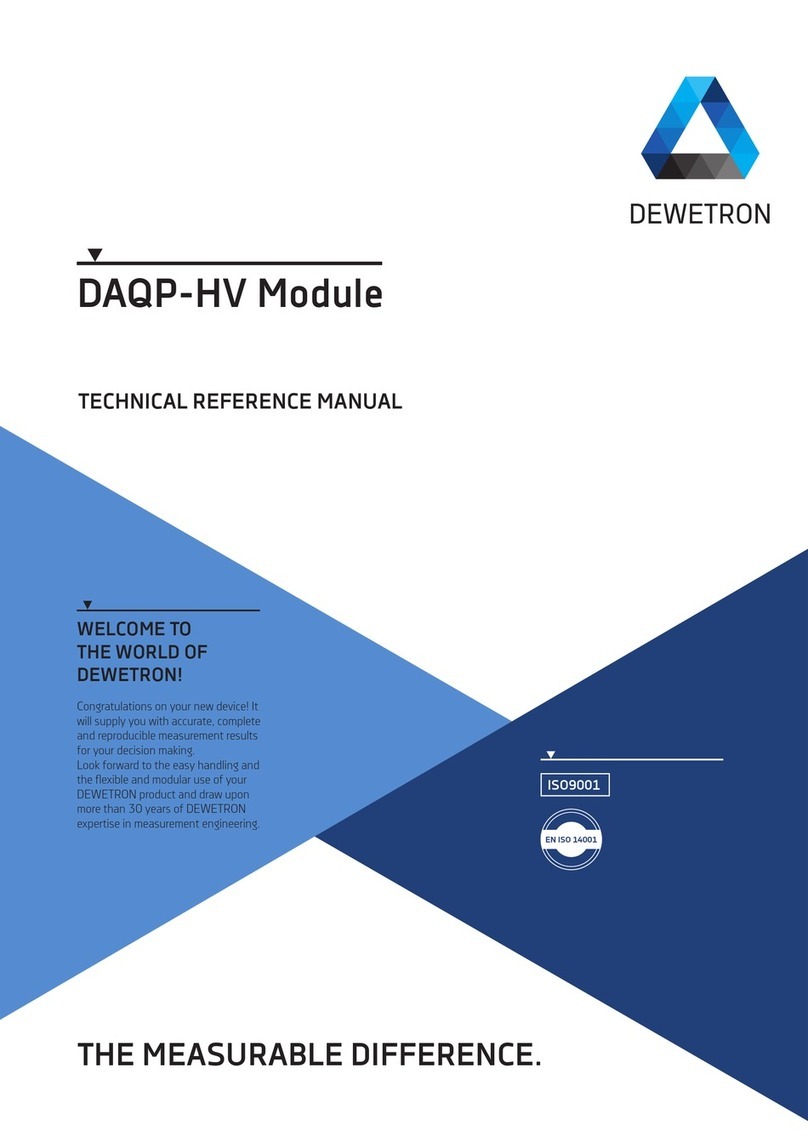
9
DAQP-CFB2
Carrier frequency amplifier
Bandwidth: max. 9.6 kHz
Input ranges: Bridge: 0.1 mV/V to 1000 mV/V
LVDT: 5 mV/V to 1000 mV/V
Capacity: 20 pF to 1 µF
Sensor Excitation: Programmable voltage and frequency up to
5 VRMS / 20 kHz; remote sense support
Bridge completion: Internal completion for ½ and ¼ bridge
(120 and 350 Ω)
Shunt: Two internal shunts (50 kΩ, 100 kΩ)
TEDS: Support for TEDS sensors
Module specifications
DAQP-CFB2
Bridge input ranges 0.1 mV/V to 1000 mV/V
Inductive bridge input ranges 5 mV/V to 1000 mV/V
Capacitive input Ranges 20 pF to 1 µF
Bridge resistance 60 - 5000 Ω depending on excitation voltage
Excitation voltage level 1, 2, 5 VRMS sensed excitation provided
Excitation voltage accuracy 0.05 % of value ± 200 µV
Excitation voltage frequency 0.6; 1; 2.5; 5; 10; 20 kHz sine wave ±100 ppm
Maximum excitation current 50 mARMS short circuit protected
Excitation voltage synchronisation internal crystal oscillator or external
Excitation voltage drift typically 20 ppm/K
Excitation frequency drift typically 2 ppm/K
Nonlinearity ±0.02 % FS
Accuracy bridge mode typically ±0.1 % of reading ±0.05 % of range
Max. o set drift ±0.003 µV/V/K ±40 ppm of Range/K
Max. gain drift ±30 ppm/K
Balance adjusting range ±400 % of Range (±200 % at 1 V excitation)
Phase adjustment range ±90° (inductive mode only)
Balance adjusting accuracy within ±0.1 % FS
Supported sensors 4- or 6-wire full bridge
3- or 5-wire ½ bridge with internal completion (software programmable)
3-wire ¼ bridge with internal resistor for 120 and 350 Ω (software programmable)
inductive full bridge
inductive half bridge (typically LVDT Sensors)
Shunt calibration internal 50 kΩ and 100 kΩ Shunt
Completion and shunt resistor accuracy ±0.05 %
-3 dB Bandwidth max 9.6 kHz
Reconstruction lter 7th order Butterworth, automatically adjusted to excitation frequency * 0.48
Signal lters (low pass) 10, 30, 100, 300, 1 kHz, 3 kHz
Filter characteristics 2nd order Bessel or Butterworth (40 dB/ decade)
Typ. SNR @ 1000 Hz [100 Hz] 78 dB [85 dB] @ 1 mV/V
and 2 VRMS excitation 80 dB [87 dB] @ 100 mV/V
Over voltage protection ±10 V
Output voltage ±5 V
Out current ±5 mA
Output protection continuous short to ground
Power consumption max. 1.5 W
Supported TEDS chips DS2406, DS2430, DS2432, DS2433, DS2431
Weight within 250 (±30) g
450134 • DAQP/HSI/PAD Modules • Technical Reference Manual • Printing version 2.3.4 • November 18, 2020

